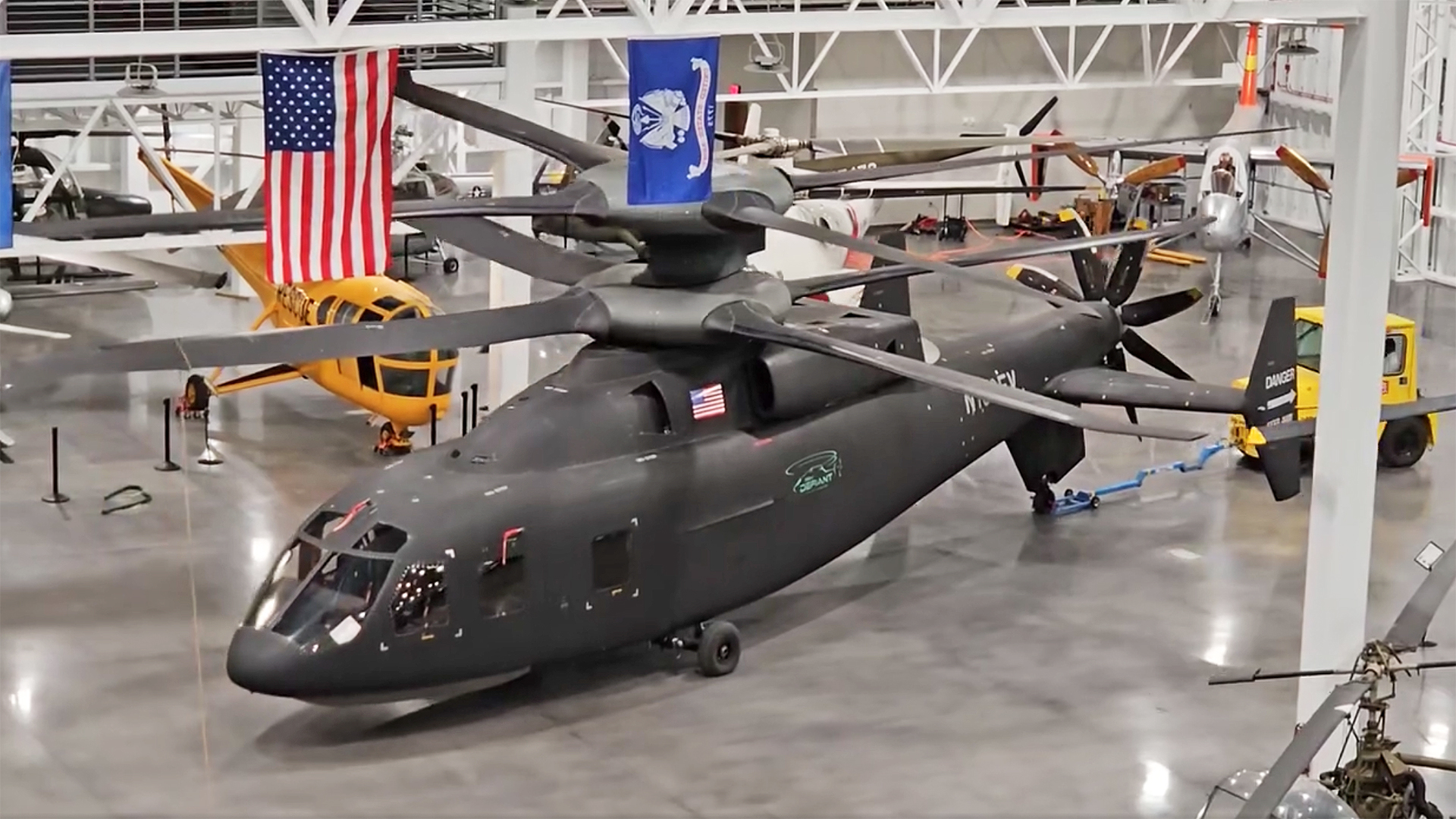Sikorsky and Boeing’s medium-lift, high-speed, compound-coaxial helicopter that aimed to replace large numbers of Black Hawks has been donated to a museum. The SB>1 Defiant’s final resting place is at the Army Aviation Museum at Fort Novosel in Alabama.
Sikorsky tells The War Zone in a statement that “Upon completion of SB>1 DEFIANT’s contractual commitments to the Army on the FLRAA [Future Long-Range Assault Aircraft] program, the Sikorsky-Boeing team offered to donate the aircraft to the Army Aviation Museum at Fort Novosel where it is now scheduled to be proudly displayed alongside many other historical aircraft.”
Video of the SB>1 being rolled onto the museum floor was posted last week:
The SB>1 Defiant lost the Future Long-Range Assault Aircraft tender to a design based on Bell’s V-280 Valor next-generation tiltrotor nearly two years ago. It was a very high-stakes competition, our analysis of the results of which you can read here. A subsequent protest by the Sikorsky-Boeing team over the selection of the V-280 didn’t change the outcome.

After the loss, it wasn’t exactly clear what would come of the SB>1 demonstrator or the design overall, but at this point it is clear that the airframe will not continue to be used in any testing and will be put on permanent display.
That’s not to say that the X2 technology that Sikorsky has developed over two decades will be put on the shelf, even though another blow to it came when the Future Attack Reconnaissance Aircraft (FARA) program, which aimed to supply the Army with a high-speed new-generation scout and attack helicopter, was cancelled earlier this year. Sikorsky’s promising RaiderX, which was based on the company’s S-97 Raider demonstrator, was seen by some as a potential frontrunner for that tender. The Raider used X2 technology, with the Defiant being an enlarged manifestation of the general concept.

Still, the S-97 continues on and there is interest in it for a number of roles internationally, as well as continued development domestically. Sikorsky laid out the continuing efforts related to its X2 technology to us as follows:
“We are seeing a number of opportunities across the globe for X2 aircraft, which includes interest in Korea and Europe. With the NATO Next Generation Rotorcraft Capability (NGRC) Program, our X2 aircraft will bring to bear the strengths of Lockheed Martin along with input from our European Industry Group, such as digital thread, advanced manufacturing, sustainment, training, and weapon and mission system development, to provide NATO with an integrated rotorcraft system that combines speed, range, maneuverability, survivability and operational flexibility.”
“Also, we continue to reduce risk for Army Aviation through the maturation of technologies we developed for U.S. Army Future Vertical Lift programs, which are also applicable to the next-generation modernized Black Hawk – such as MOSA, Launched Effects and Autonomy. For example, we continue to partner with the government to provide data benefitting current and future Army Aviation development efforts. After full integration of the Army’s ITE [Improved Turbine Engine] onto RAIDER X, we successfully lit off the engine this past April. This represents the first on wing operation of the ITE and the 4th evolution of X2 rotorcraft.”
“U.S. Army funded X2 engineering risk reduction flights on S-97 RAIDER are scheduled through mid-2025.”

The Raider’s speed — upwards of 220 knots — as well as its agility and hot and high performance, all packed in a relatively small footprint, really provide an unmatched capability. It has been flying for nearly a decade with a lot of risk reduction already baked into the system. It can carry up to six troops and two pilots, or weapons that pop out from its cabin area. So there are a lot of applications and flexibility for the type. It will be interesting to see if it can find a buyer. The optionally manned capability could be even more attractive and this is an area where Sikorsky is making major strides. There was also some talk about the S-97 being potentially adopted by U.S. Army Special Operations Command, possibly to replace at least part of the MH-6/AH-6 Little Bird fleet, but that chatter seems to have died down and discussions of what will replace the Little Birds have changed significantly in recent months.
Regardless, it is sad to see Defiant go. It was an impressive-looking machine. At least people will be able to check it out close-up for years to come at its new home at Fort Novosel.
Contact the author: Tyler@twz.com
